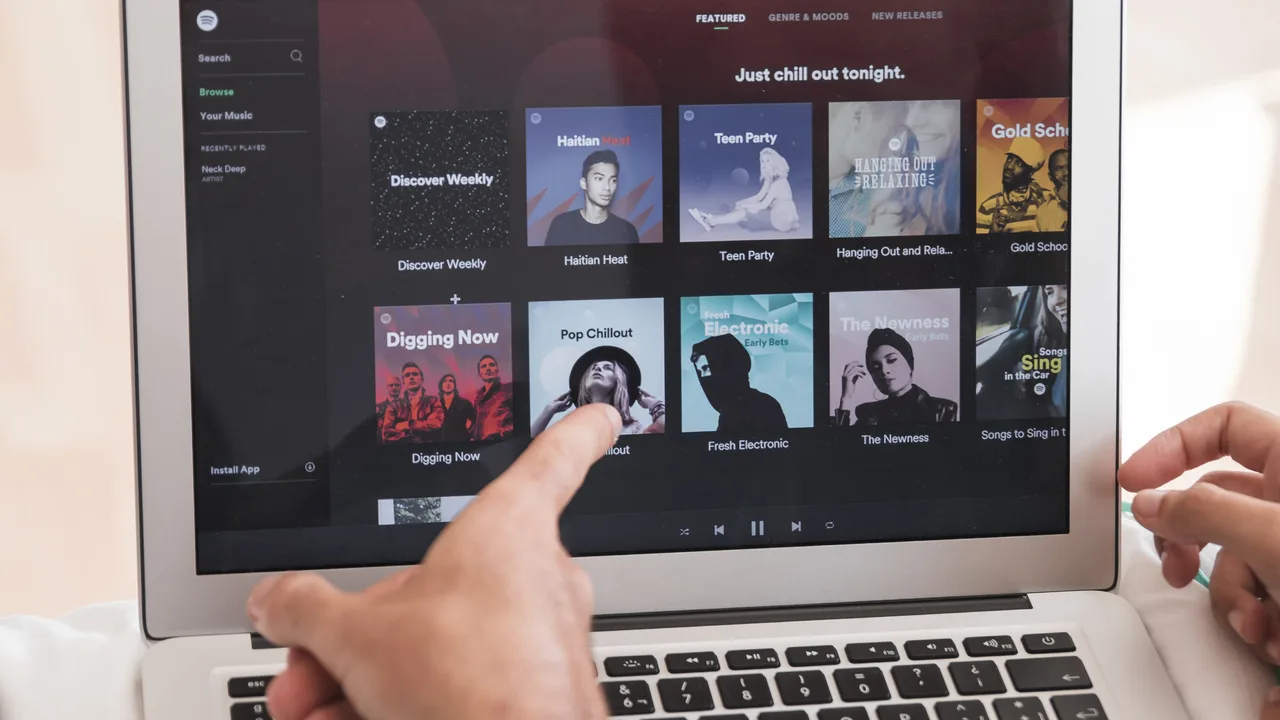Spotify profit forecast has captured investor attention after the streaming giant announced that its upcoming quarterly results will exceed market expectations. Backed by strong user growth, premium price increases, and disciplined cost management, the company is heading into 2026 with renewed profitability momentum. Spotify’s latest update signals not only a financial turnaround but also strategic maturity in how it balances growth with operational efficiency.
Spotify Profit Forecast: Exceeding Market Expectations
According to Spotify Technology SA’s recent guidance, the company expects an operating profit of around €620 million for the fourth quarter — slightly above analysts’ average estimate of €618.6 million. Revenue is projected to reach approximately €4.5 billion, marginally below market forecasts of €4.57 billion. Despite this small variance in revenue, the strong profitability outlook underscores the platform’s improved monetization efficiency.
The announcement immediately boosted investor confidence, with Spotify shares rising by more than 5% in pre-market trading. The positive sentiment reflects the market’s recognition of Spotify’s successful execution of its restructuring strategy and its ability to scale both revenue and margin in a competitive digital media landscape.
Rapid User Growth Fuels Spotify’s Profit Momentum

Central to the strong Spotify profit forecast is the company’s remarkable growth in both free and premium users. Monthly active users (MAUs) in the third quarter reached 713 million, representing an impressive net addition of 17 million users. Premium subscribers — who generate the majority of Spotify’s revenue — climbed 12% year-on-year to reach 281 million, fully in line with analyst projections.
For the upcoming quarter, Spotify anticipates MAUs to increase to 745 million, surpassing consensus estimates of 737 million. Premium subscribers are expected to rise by another 8 million to 289 million, only slightly below the projected 290.9 million. These figures reinforce Spotify’s dominance as the world’s leading audio-streaming platform, far ahead of rivals like Apple Music, Amazon Music, and YouTube Music.
Growth Strategies Behind the Numbers
Spotify’s management attributes this steady growth to several key strategies:
- Localized content expansion: The company continues to invest heavily in regional artists and playlists, helping it penetrate emerging markets such as Southeast Asia, Latin America, and Africa.
- Improved algorithmic discovery: Advanced recommendation systems powered by AI and machine learning have significantly increased user engagement and retention rates.
- Bundled offerings: Spotify’s integration with mobile carriers and hardware manufacturers has made subscriptions more accessible to price-sensitive users.
These combined efforts have not only grown the audience but also strengthened the average revenue per user (ARPU), directly feeding into a stronger Spotify profit forecast.
How Price Hikes Strengthened Spotify’s Margins
One of the boldest moves contributing to the higher Spotify profit forecast was its decision to increase subscription prices across key markets. The company raised individual, family, and student plan prices in several countries, including the United States, the United Kingdom, and parts of Europe. Despite initial concerns about user churn, the data shows that retention rates remained stable — proving Spotify’s pricing power in a crowded market.
By introducing premium features such as lossless audio and exclusive podcast access, Spotify successfully justified the price adjustments. This has translated into better operating margins and a clear path toward sustainable profitability.
Cost Discipline and Operational Efficiency
In addition to revenue growth, Spotify’s improved margins are also the result of aggressive cost-cutting measures. Over the past year, the company reduced marketing expenses, streamlined internal teams, and optimized cloud infrastructure to lower overhead. These operational efficiencies are now paying off, providing stronger leverage as user numbers grow.
Innovation and AI Integration Driving Future Profitability
Another major factor shaping the Spotify profit forecast is the company’s continued innovation. Spotify has recently announced a partnership with OpenAI, allowing users to interact with ChatGPT directly to receive personalized music and podcast recommendations. This conversational integration is expected to drive higher engagement among younger demographics and differentiate Spotify from competitors.
Moreover, Spotify’s audiobook segment is gaining traction. In the third quarter, audiobook listening hours rose 37% year-on-year, while the number of active listeners increased by 36%. This diversification into spoken-word content provides a new revenue stream beyond music and podcasts — further stabilizing Spotify’s long-term financial outlook.
Leadership Transition: Daniel Ek’s Next Chapter
This quarter also marks a significant leadership change at Spotify. Founder and CEO Daniel Ek announced that he will transition to the role of Executive Chairman in January 2026. The company will move to a co-CEO structure aimed at improving strategic agility and operational oversight. Market observers view this shift as a natural evolution for Spotify as it matures into a diversified global audio company.
Ek’s legacy remains deeply tied to Spotify’s culture of innovation and user-centric design. Under his leadership, the company grew from a niche European startup into a global streaming powerhouse with hundreds of millions of users across 180+ countries. His continued involvement is expected to ensure continuity in Spotify’s mission while empowering new leadership to accelerate growth.
Outlook: A Sustainable Path Toward Long-Term Growth

The latest Spotify profit forecast illustrates how far the company has come since its early loss-making years. By balancing user expansion, price optimization, and cost control, Spotify is gradually achieving the kind of operational stability investors have long demanded. Analysts believe this momentum will continue as the company expands its ecosystem to include more interactive features, creator tools, and advertising innovations.
Spotify’s near-term focus will likely center around:
- Enhancing monetization through premium upgrades and targeted ads.
- Expanding in emerging markets where digital streaming penetration is still low.
- Leveraging AI for content curation, personalized recommendations, and user analytics.
As consumer behavior continues shifting toward on-demand and personalized media consumption, Spotify appears well-positioned to lead the next phase of the digital audio revolution.
Conclusion
The upward Spotify profit forecast underscores the company’s transformation from rapid-growth disruptor to disciplined market leader. Strong user growth, strategic price adjustments, AI-driven innovation, and cost optimization are all converging to create a financially resilient business model. As the platform continues expanding across music, podcasts, and audiobooks, Spotify’s focus on profitability — not just scale — marks a new era for the world’s leading audio-streaming service.



